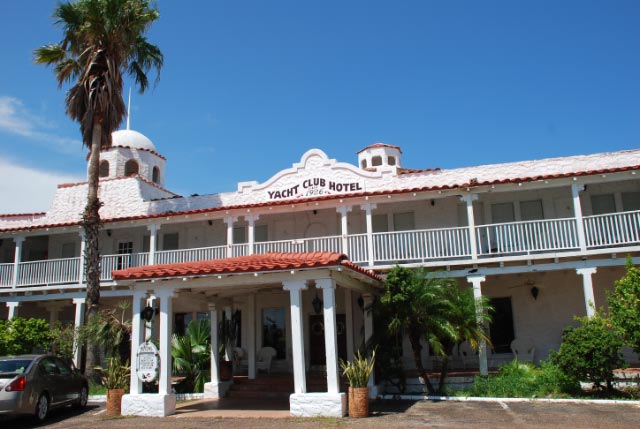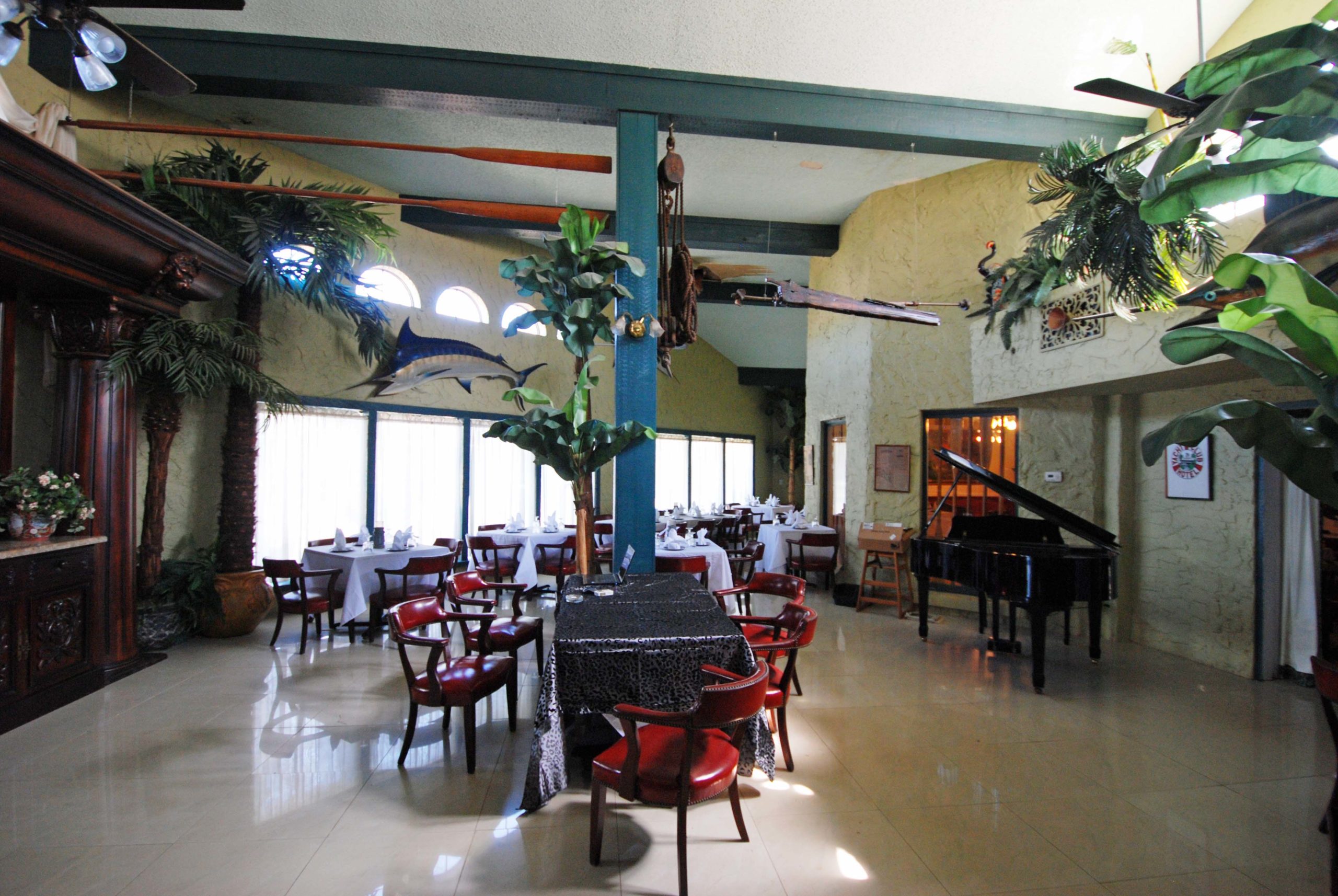The Cameron County Regional Mobility Authority (CCRMA) in partnership with the Texas Department of Transportation and the Federal Highway Administration (FHWA), are collaborating to provide SPI the 2nd Access.
The proposed project consists of three major factors: the mainland roadway, the Laguna Madre crossing bridge, and the island roadway.
The route under consideration includes a mainland roadway consisting of a four-lane road, crossing across Laguna Madre with about 8 miles of tolled lanes. The total length of the second access is approximately 17.6 miles.
In November 2013, the Texas Transportation Commission approved a $5.1 million funding agreement to be used in the continued study and development of the second access project. The $5.1 million is used to finalize the draft environmental impact study and for traffic and revenue studies. Once this is done the design, and then the construction of the project can begin.
This is not a short-term project. It’s a long term project and providing a second causeway access will create thousands of jobs over a 30 or 40 year period.
The funding from the Texas Transportation Commission gives an idea of the commitment and importance of the project to the State of Texas

SpaceX on Thursday told the Valley Morning Star in an email that the company is cautious but “hopeful” about its chances to build a launch site on Boca Chica beach.
“Although Cameron County remains a finalist for the development of a commercial orbital launch complex, the decision will not be made until all technical and regulatory due diligence is complete.
“Following the release of the Final Environmental Impact Statement, the FAA will issue a final Record of Decision (ROD). Pending the ROD, there would be several other criteria that will need to be met before SpaceX makes a decision,” SpaceX spokeswoman Hannah Post said.
“While the timing of some of these critical steps is not within SpaceX’s control, we are hopeful that these will be complete in the near future,” Post added.
The proposed site on Boca Chica beach continues to be the only preferred location for building the world’s first private commercial vertical launch site, according to the Federal Aviation Administration’s final environmental impact statement issued Wednesday and now available for public review.
The report mirrors the earlier draft environmental impact statement, which also found that other alternative sites are not feasible.
Elon Musk’s California-based Space Exploration Technologies hopes to launch the Falcon 9 and Falcon Heavy orbital vertical launch rockets — which also could carry the Dragon capsule — and a variety of smaller reusable suborbital launch vehicles, from Boca Chica carrying payload for the International Space Station.
SpaceX has proposed up to 12 launch operations a year through at least 2025.
During the next 30 days, a variety of federal agencies will have the opportunity to resolve differences, if any. This FAA’s issuance of its Record of Decision on the proposal would follow.
Check back with the Valley Morning Star throughout the day for SpaceX updates.
BY EMMA PEREZ-TREVIÑO, Valley Morning Star
The Port Isabel Yacht Club Hotel is among the 12 sites that Preservation Texas, Inc. has named to its eleventh annual list of Texas’ Most Endangered Places.
Preservation Texas officials announced the selections outside the Texas State Capitol on May 20.
“The 2014 list is a diverse group of sites that reflect the range of preservation issues that historic places throughout the state are confronting,” said Evan Thompson, executive director of Preservation Texas. “The sites are cultural, architectural and historic icons that are at imminent risk of disappearing from the landscape. Local grassroots organizations have been working tirelessly in support of these sites. By including them on the 2014 list, we hope to rally Texans statewide to step up and save them by supporting job-creating investments in our state’s historic places.”
Historic preservation is a billion dollar industry in Texas. Historic sites named to the list of Texas’ Most Endangered Places represent some of the biggest economic opportunities to make an impact on local communities through preservation. Preservation Texas provides technical assistance to identify preservation needs and set priorities, fund raising expertise, and assistance in fostering partnerships and building community support.
PORT ISABEL YACHT CLUB (1926)
77 N. Yturria St.
Port Isabel, Cameron County
Built in 1926 as the Point Isabel Yacht Club, its early years were associated with famed citrus grower John Shary. Located on the Intracoastal Waterway, the club was soon expanded to include numerous rooms for visitors. Noted guests ranged from Warren Harding to Al Capone to Amelia Earhart. The Spanish Colonial Renaissance building stands as a vivid reminder of Gulf Coast development during the roaring 20s.
Today, the building is in need of restoration. Having condemned the building in recent years, the City of Port Isabel is working to acquire the building and seeks to adapt it for office, educational and cultural uses. This early 20th century landmark on the Texas coast can serve as a model for the creative repurposing of an old building while inspiring preservation of other important architectural and cultural sites in Cameron County.
Sites named to the 2014 list are:
Abilene Courts
Abilene, Taylor County
Brinkley Davis House
Limestone County
Camp Logan / Hogg Bird Sanctuary
Houston, Harris County
Clay House
Nacogdoches, Nacogdoches County
Dorbandt House
Marble Falls, Burnet County
Jefferson Ordnance Magazine
Jefferson, Marion County
Lerma’s Nite Club
San Antonio, Bexar County
Mary Allen Seminary
Crockett, Houston County
Oňate Crossing/Hart’s Mill/Old Fort Bliss
El Paso, El Paso County
Pig Stand No. 41
Beaumont, Jefferson County
Port Isabel Yacht Club Hotel
Port Isabel, Cameron County
Reynolds-Seaquist House
Mason, Mason County
Thompson noted that the sites included on the 2014 list reflect increased awareness of the importance of historic preservation in supporting landmarks in small communities. “Passion and determination in these communities are strong, but badly managed land use planning, coupled with a lack of financial resources and professional guidance present serious challenges,” he said.
Preservation Texas, Inc. is the advocate for preserving the historic resources of Texas. Founded in 1985, the nonprofit organization named its first list of endangered sites in 2004. Its Most Endangered Places program is funded in part by grants and sponsorships from across the state.
For more information on Texas’ Most Endangered Places, visit www.preservationtexas.org, or phone Preservation Texas, Inc. at 512-472-0102.
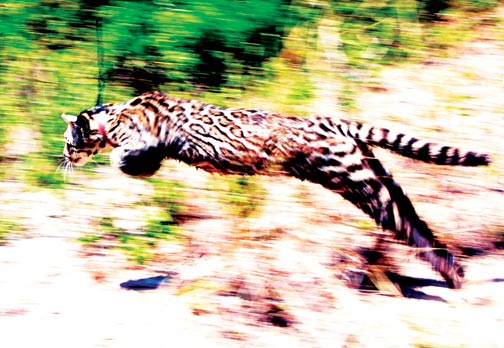
Another young ocelot has been found at the Laguna Atascosa National Wildlife Refuge, making it the second juvenile ocelot discovered this year.
Officials at the refuge said the young male is believed to be 12 to 14 months old. He was recently captured on the refuge.
This ocelot seems to appear healthy, wildlife biologist Hilary Swarts said. The refuge has about 50 cameras on the refuge that are used to track the ocelots.
Because the cat’s coat pattern did not match any of the other ocelots from the refuge’s collection of trip cameras, officials knew that he must be a newly found ocelot.
“Each ocelot has a unique coat pattern like a human fingerprint,” Swarts said. “This is new young one and his patterns didn’t match anybody we already have (on camera).”
Swarts said although the ocelot is a juvenile, it will more than likely travel alongside its mother for about a year. Another ocelot, a female, was discovered on the refuge in March. Swarts said the fact that two ocelots have now been found leads officials to believe that there could be more ocelots in the area that have yet to be detected. The current number of ocelots on the refuge is 12, with five females and seven males. The estimated number of ocelots in Texas is less than 50.

Spring is a time of renewal when flowers bloom, trees sprout new greenery, butterflies abound and Rio Grande Valley birds show off their offspring.
I always enjoy seeing and photographing the children of spring. Whenever I see the latest batch of black-bellied whistling ducks, baby gallinules begging mom and dad for food, or day-old black-necked stilts trying to walk on those oversized gangly legs, for a moment it makes me think all is right with the world.
As we all know, however, it’s a jungle out there and the young and helpless are vulnerable, even under mom and dad’s watchful eyes. But nature usually has a way of making certain enough baby birds survive to ensure survival of the species. It doesn’t hurt, however, to have a little help along the way.
Several years ago I found a stilt nest on South Padre Island and observed it every chance I got. It was an outdoor classroom I’ll never forget.
The parents shared incubation duties and while one was on the eggs (there were four eggs), the other was on constant alert. Any bird that came close to the nest, intentional or not, was quickly driven away. In particular, the stilts were constantly chasing laughing gulls.
When the stilts weren’t driving off other birds, there was still plenty of work to be done. Nest maintenance was continuous. In addition, adults would turn the eggs over at certain intervals.
After 23 days the first egg hatched. On day 24 two more eggs hatched. The fourth egg hatched three days later.
If this sounds kind off odd, I’ve been told stilt eggs are laid over several days, which explains the time difference for hatchings.
My schooling on black-necked stilt families didn’t end with the hatchings. If I thought the parents were protective before, they were even more protective now. I recall one day observing two black-necked stilt families come into contact and how the parents were yelping and trying to drive the invading family away. All the while, the baby stilts from both sets of parents went about their business of finding food as if nothing was happening.
As the babies began to grow and look more and more like adults and less like downy chicks, the parents would take them to new feeding areas. After several weeks, I never saw them again.
I have no doubt that most or possibly all the babies became adults.
What I wonder about most, however, was whether the new adults moved on to other parts of the Valley or returned to the Island to eventually raise their young?
I’ll never know the answer to that, but sometimes when I see a stilt on SPI I wonder if this is an old friend.
Steve Sinclair
The Coastal Current

Another U.S. Navy aircraft carrier is coming to the Port of Brownsville for dismantling.
The U.S. Navy announced Friday that it has awarded the contract to ESCO Marine for one penny to dismantle the USS Saratoga.
The aircraft carrier is currently housed at the Naval Station Newport, Rhode Island. It is expected to depart this summer and be towed to Brownsville.
The USS Saratoga was decommissioned Sept. 30, 1994, after more than 30 years of service, the U.S. Navy stated in a press release.
Although the Navy tried to donate the ship to a state or non-profit organization for public display or to be used as a museum, no “viable” applications were received.
Navy officials said they had no choice but to put out bids to have the aircraft carrier dismantled.
This is the second ship to be towed to Brownsville to be dismantled in recent months. Earlier this year, the USS Forrestal was arrived in February for disposal by All Star Metals. Officials expect it will take about 18 months to dismantle this ship.
A contract is pending for the dismantling of a third ship, the USS Constellation. If approved, this ship would dismantled by International Shipbreaking Ltd., officials said.
By LAURA B. MARTINEZ The Brownsville Herald
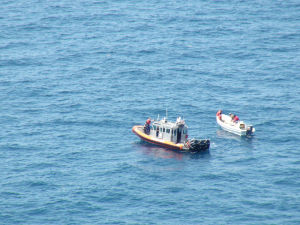
The U.S. Coast Guard has seized a Mexican fishing boat and detained its five crewmembers in a poaching investigation off Texas.
Coast Guard officials on Monday announced four other boats fled back to Mexican waters. The incident happened Saturday afternoon north of the U.S. and Mexico maritime border and inside the U.S. exclusive economic zone.
A Coast Guard helicopter spotted five boats about 16 miles north of the border. A Coast Guard boat from South Padre Island intercepted one vessel and found 48 dead red snapper.
The five-person crew was turned over to U.S. Customs and Border Protection officials for return to Mexico. The catch was disposed of at sea.
The Gulf of Mexico Fishery Management Council has approved an 11-day red snapper season beginning June 1.
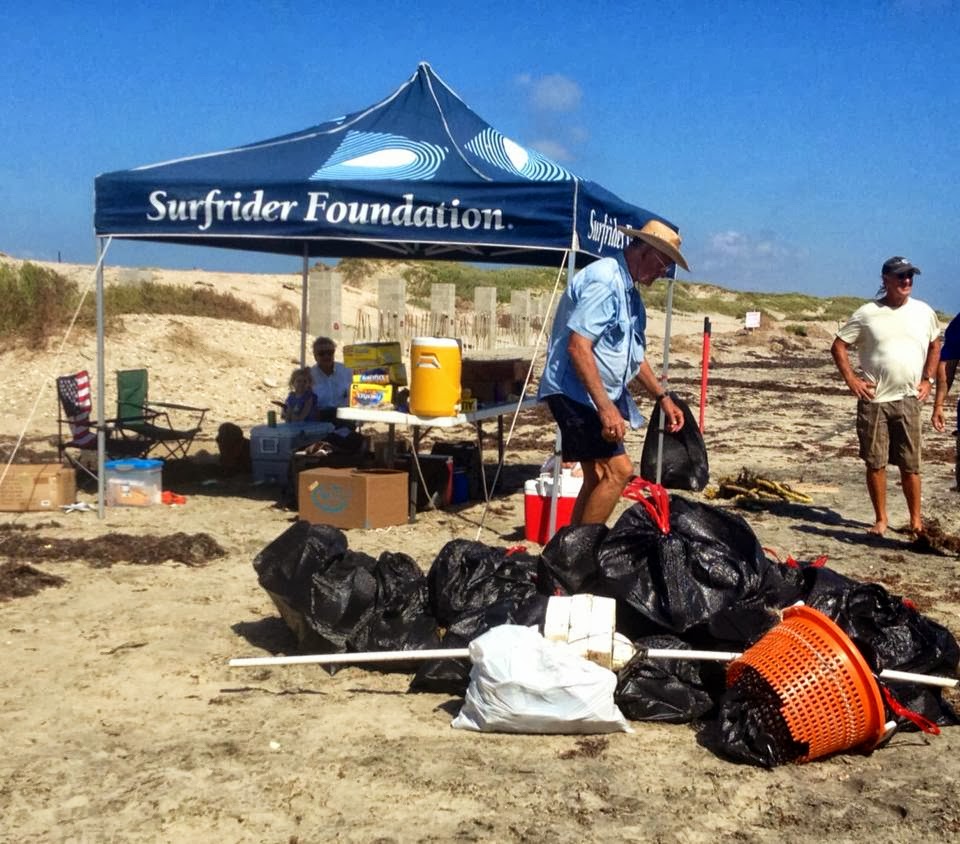
The Barefoot Wine Beach Rescue Project, now in its eighth year, helps keep beaches, rivers and lakes across America “barefoot friendly.”
In 2014, Barefoot Wine and the Surfrider Foundation, along with community volunteers, are embarking on a tour of 15 cleanups and restorations nationwide, stopping in South Padre Island.
The Surfrider Foundation South Texas Chapter will once again host a day of dune restoration and celebration of efforts to keep Island beaches clean.
Volunteers are asked to turn out at City Beach Access No. 18 for the dune restoration project from 9-11 a.m.
After a morning of planting of vegetation to help stabilize the dunes, the volunteers will head for the Padre Island Brewing Co. for a Surfrider-hosted celebration featuring Barefoot Wine and surf-inspired food.
The events are free and open to the public. For more information visit beachrescue2014.com.
#surfriderfoundation #beachcleanup

The Martinque Waterfront is a beautiful three bedroom, four bath house currently near completion at The Shores Master Planned Community. The house has a very spacious living, dining/kitchen area with views of the Laguna Madre and marina in front of the house, making for the perfect place to entertain friends and family. Each of the three bedrooms has its own private bath and dressing area.
The ground floor provides an elegant entry to the house, a garage, and a large recreation area with a bar and full bath. The recreation room has a glass wall that opens to the pool creating an indoor/outdoor living area. The tile floors, granite counter tops, and quality appliances make this an upscale house at a very reasonable cost.
The Shores is a Master Planned Gated Community and is designed to enhance the tranquility of an unhurried lifestyle and provide the privacy and amenities of a traditional neighborhood. The beachfront and bay front homes are designed with elements of comfort such as high ceilings, soft colors, and broad stately porches. Every home offers panoramic views and is constructed of state-of-the-art storm resisted building materials. Owners in The Shores have access to The Shores Marina Park, which contains a large swimming pool, children’s fountain, amphitheater, tennis courts, and a basketball court. The Shores owners also have access to the marina and private beach and bay access.
The Shores is true Island luxury real estate and the Martinque Waterfront is a symbol of luxury at an affordable cost. If you would like more information on Martinque Waterfront, or any of the properties at The Shores, please call us at 956-761-2606.
We look forward to your call!
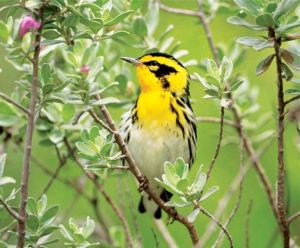
One of the most exciting components of the spring neo-tropical bird migration is the mass movement of warblers through the Lower Rio Grande Valley.
Of the 57 warblers that breed in North America, many pass through the area along the Central Flyway on their way to nesting grounds in more northern parts of the United States and Canada.
The warbler migration is one of nature’s great spectacles. They are like ornaments that adorn trees and bushes with their bright colors, nervous dispositions and big appetites. They are among the most beautiful birds in North America.
I once read a story about a woman who was asked what her favorite warbler was. She replied “the last one I see.” I think a lot of birders and bird photographers can relate to that.
At various times, my favorite warbler has been the cerulean, or the Cape May, or the Blackburnian, or maybe the prothonotary, or possibly the golden-winged. Tomorrow, it may be the bay-breasted, or the black-and-white, or the magnolia. You get the picture.
A few have special significance that go beyond their beauty.
For example, the yellow warbler is the first wood warbler I remember seeing and that came many years ago at Aransas National Wildlife Refuge. The first one I photographed was a yellow-throated warbler, and that was at South Padre Island. Another warbler that has special significance is the prothonotary because it nests in the part of Texas I’m from.
It’s one of nature’s great miracles that these tiny birds are able to navigate 600 miles or so across the Gulf of Mexico at night and arrive in the Valley. Many are so fatigued they are unable to keep out of harm’s way.
I remember an incident several years ago during the spring migration on South Padre Island. I was getting ready to call it a day when I noticed a Tennessee warbler landing on a bush in front of me. I could tell it had just crossed the Gulf and was completely exhausted. I decided to watch the warbler for a few minutes to make certain it was going to be OK.
Shortly thereafter the sun set and the warbler found just enough energy to drop to the ground and slip under a railroad tie to spend the night. The next morning, I checked to see if the warbler was still there but it wasn’t. I would like to think the bird made it through the night, regained its strength and eventually continued its northward journey.
As tough as that Tennessee warbler had it, nothing compares to the journey of the Blackpoll warbler, which frequents the Valley during the migration. This striking warbler winters in Brazil and travels several thousand miles to nesting grounds in Canada and Alaska. That’s nothing short of miraculous.
But then that shouldn’t surprise me. Warblers, after all, are incredible birds and prove that beauty can be found in even the smallest package.
Visit the SPI Birding & Nature Center
Steve Sinclair
The Coastal Current
May 5, 2014


